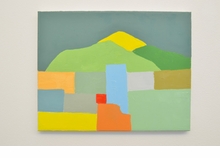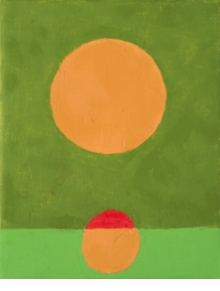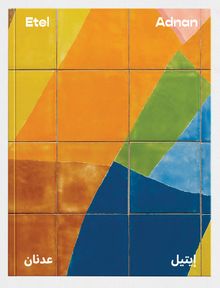| |||||||||||||||||||||||||
ARTIST MONOGRAPHS
|
|
STATUS: Forthcoming | 2/3/2026 This title is not yet published in the U.S. To pre-order or receive notice when the book is available, please email orders @ artbook.com |
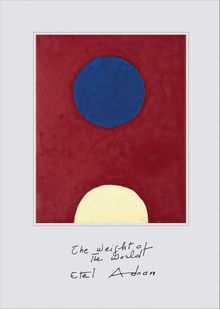 Etel Adnan: The Weight of the World
Etel Adnan: The Weight of the World
Published by Koenig Books.
Edited by Julia Peyton-Jones, Hans Ulrich Obrist. Text by Simone Fattal, Robert Grenier, Kaelen Wilson-Goldie.
Presenting the impressive diversity of Adnan’s work, The Weight of the World includes paintings, drawings, poetry, film, ceramics and tapestries. The catalogue’s title is taken from a new series of paintings completed for the show it accompanies at the Serpentine Gallery in London. It includes an essay by critic and writer Kaelen Wilson-Goldie that places Adnan’s art within the political and social context that has inspired it; a text by poet Robert Grenier; and writings by artist and publisher Simone Fattal on Adnan’s practice.
PUBLISHER
Koenig Books
BOOK FORMAT
Clth, 6 x 9 in. / 192 pgs / 104 color.
PUBLISHING STATUS
Pub Date 9/27/2016
Out of print
DISTRIBUTION
D.A.P. Exclusive
Catalog: SPRING 2017 p. 103
PRODUCT DETAILS
ISBN 9783863359690 FLAT40
List Price: $40.00 CAD $54.00
AVAILABILITY
Not available
STATUS: Out of print | 00/00/00 For assistance locating a copy, please see our list of recommended out of print specialists |
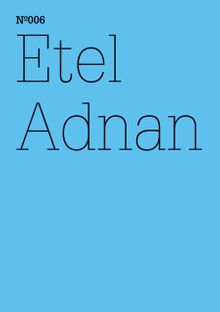 Etel Adnan: The Cost for Love We are Not Willing to Pay
Etel Adnan: The Cost for Love We are Not Willing to Pay
100 Notes, 100 Thoughts: Documenta Series 006
Published by Hatje Cantz.
By Etel Adnan.
PUBLISHER
Hatje Cantz
BOOK FORMAT
Paperback, 5.75 x 8.25 in. / 32 pgs / 1 color.
PUBLISHING STATUS
Pub Date 7/31/2011
Out of print
DISTRIBUTION
D.A.P. Exclusive
Catalog: FALL 2011 p. 104
PRODUCT DETAILS
ISBN 9783775728553 TRADE
List Price: $10.00 CAD $14.95
AVAILABILITY
Not available
STATUS: Out of print | 00/00/00 For assistance locating a copy, please see our list of recommended out of print specialists |
